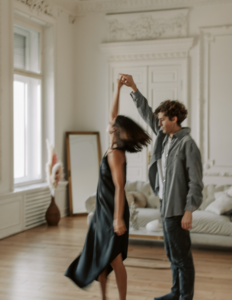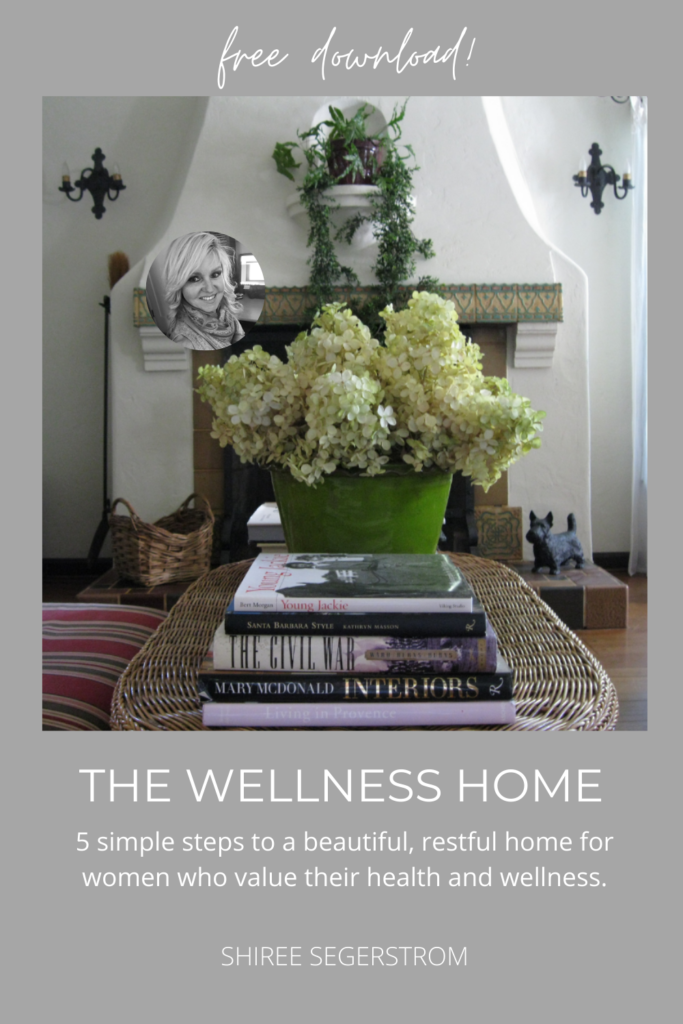Moving into a newly purchased home would seem to be an ideal situation. There’s fresh paint, clean carpets or flooring, and all that empty wall space waiting like a blank canvas for your first decorations. But trust me when I say it’s not that easy to make a new home feel warm and inviting. Today I’ll show you how to overcome the starkness of a new home.
It can take years before a home really tells you what it needs, but I’ll show you how to do it in five steps.
A home is a work in progress, always evolving. Styles change and people eventually crave improvements, even with the best-chosen colors, flooring and furnishings.
I think the thing that holds us back from creating a warm home environment is uncertainty, but there is also this misconception that a home looks better when sparsely furnished. Unless you happen to prefer the look of a museum or a mass-mailed furniture catalog, it’s just not a great ‘look’ to live with.
A home looks and feels better when it has a more personal appearance, one that has evolved over time.
So how to personalize your new home right from the beginning? I’ve put together some ways to help you identify the usual culprits of decorating a brand-new home and some solutions to apply on your own or with the assistance of a decorator.
Upgrades for Personalizing Your New Home
Little things can make a big difference in a new home, like new faucets, new light fixtures, and new doorknobs. I notice these tend to be dated in many homes.
I think the reason for this is because they weren’t chosen well to begin with. When you’re ready to make upgrades, here are the best one to take your home from fair to fabulous and not break the bank.
Light fixtures
Solar tubes
Faucets
Doorknobs
Cabinet pulls
Custom fitted vanity mirrors
Bigger Home Investments
When bigger improvements are a consideration, think about the value of the home and whether or not it can realize the investment of upgrading.
In design school way back in the mid-nineties, we were taught that kitchens can be remodeled at about 5-10% of the home’s market value and retain or improve its value but discuss with this with your realtor at the time of purchasing your new home.
Kitchen and bath remodels
Crown molding
Hardwood floors (I recommend old school solid wood)
Stone or tile flooring
Quality baseboards
Energy efficient doors and windows
Upgraded fireplaces, hearths and mantels.
Built ins.
Don’t Toss the Furniture Just Yet
This is counter intuitive but promise me you’ll resist the temptation to discard any furniture or accessories until well after the big move. You may “think” you don’t like an old chair or desk or lamp but recovered or refinished, those old pieces may have just the aged appeal your new home needs.
Further, don’t break the bank purchasing a bunch of new things for the spare rooms. You can always discard your old items later but for now, wait till well after everything is unpacked and placed. To help you decide what things to keep, discard and repurpose, for your new home grab my 3-to-5 Things Framework that’s inside the free download, The Wellness Home!
Placement of Furniture
Place the biggest pieces first: the bed, area rugs, the sofa, the China hutch, the dining table, and the entertainment center. Place these correctly before proceeding. Don’t place anything on angles. That idea is passé and never worked well to begin with.
Think of big pieces of furniture as anchors. When placed correctly, these anchors will “feel” like they’ve been there “forever”. Like matured landscaping, they give a space a sense of “permanence”.
Place the Smaller Pieces of Furniture
Once the biggest pieces are placed properly, you can place the smaller items such as the sideboard, armchairs, accent chairs, cocktail and end tables, lamps and dressers.
The most common mistake in decorating a new home is to under furnish it. Nothing looks more impersonal than a home without enough furniture or accessories. Still, when prioritizing your budget obviously its best to buy the home first.
From a financial standpoint, homes generally increase in value whereas most new furniture doesn’t. Antiques and vintage being the obvious exceptions.
In a large living room, you can create two to three seating arrangements: one dominant and one to two subordinates.
For small living rooms one to two seating areas is plenty. I’m not a fan of end tables by the sofa. They feel unstable to me and look terrible. Instead, plan to use your cocktail table as a place to set drinks. Floor lamps are nice for next to the sofa. I especially love unobtrusive swing arm lamps here. Just make sure they’re placed near a wall. You don’t want any exposed cords for people to trip over.
For armchairs, end tables and table lamps are great.
The second most common mistake is to overlook window treatments. Unless your windows and views are outstanding, you probably need a little fabric on them by way of draperies or sheers. Wooden shutters and blinds are a wonderful option too.
Placing Art, Accessories and Framed Prints
By now, it’s time to gild the lily. You have your big anchor pieces and small accent pieces placed. Now you get to place accessories and hang pictures. These two steps will actually take more time than the previous three.
I like to start at the beginning, the entry. From there I like to move on to the formal living room, then the dining room, then the primary bedroom, then the family room or den if there is one, then the kitchen, spare bedrooms and bathrooms.
I like to work in a circular fashion viewing my rooms as I go, from the point of entrance. Try and mix up styles and eras as you furnish and accessorize each room and aim for a balanced “coverage” throughout.
Lastly, if your home or room is missing something that you can’t identify, chances are good that it’s scale, texture, fabric, or greenery.


